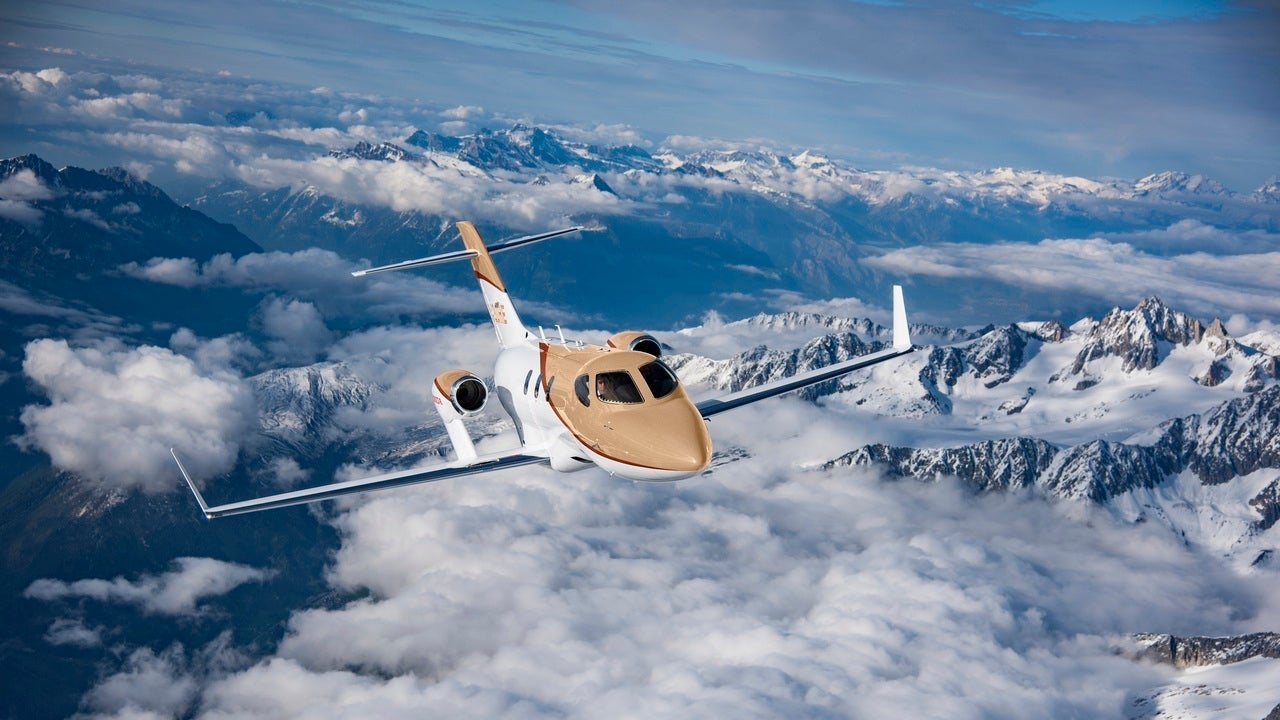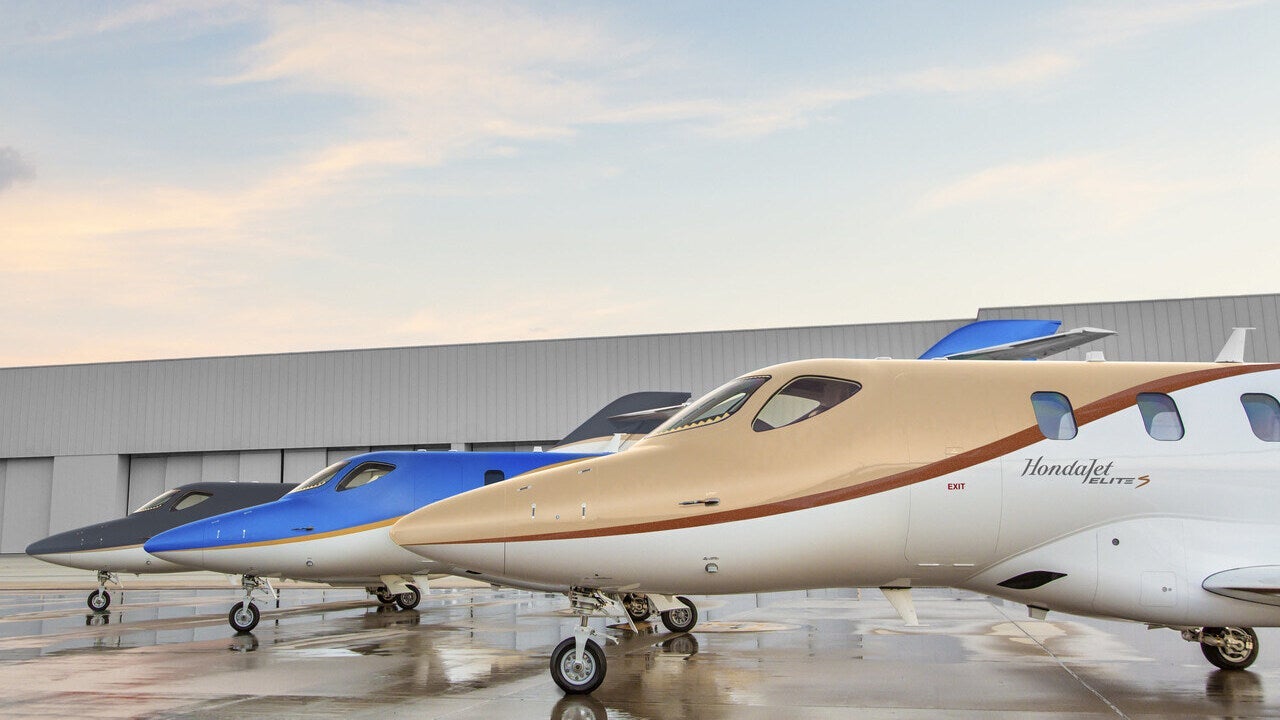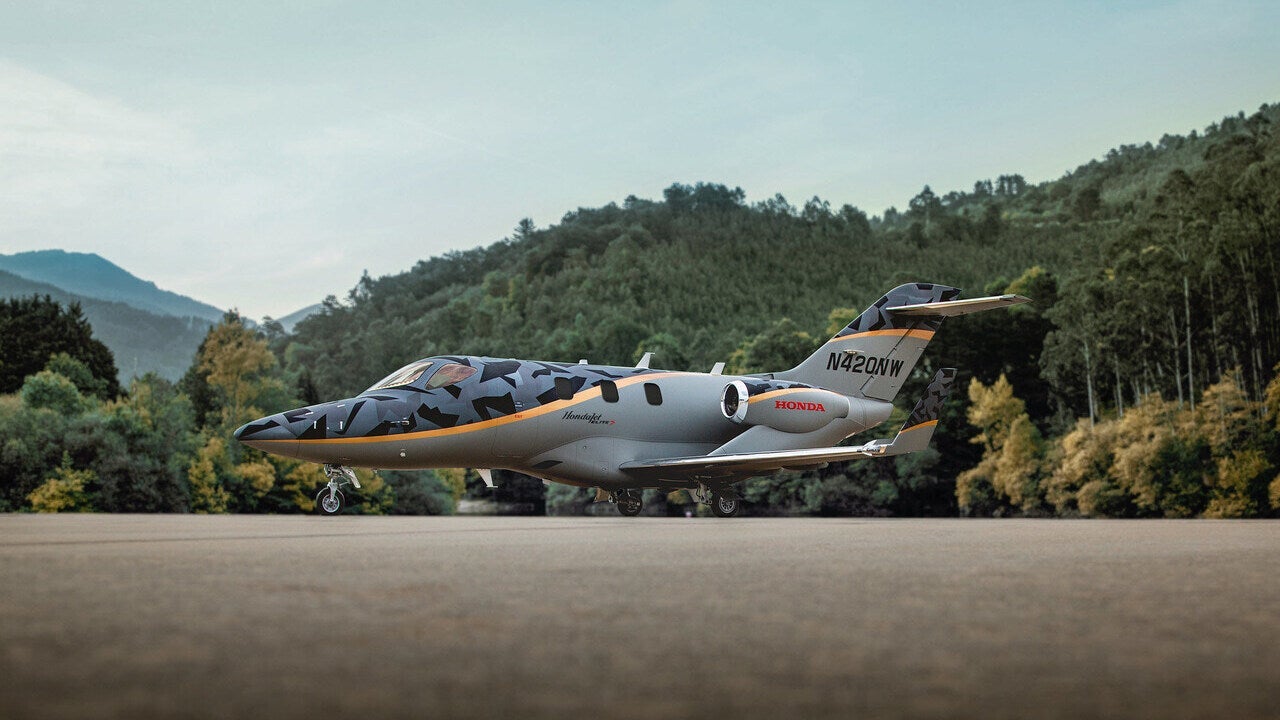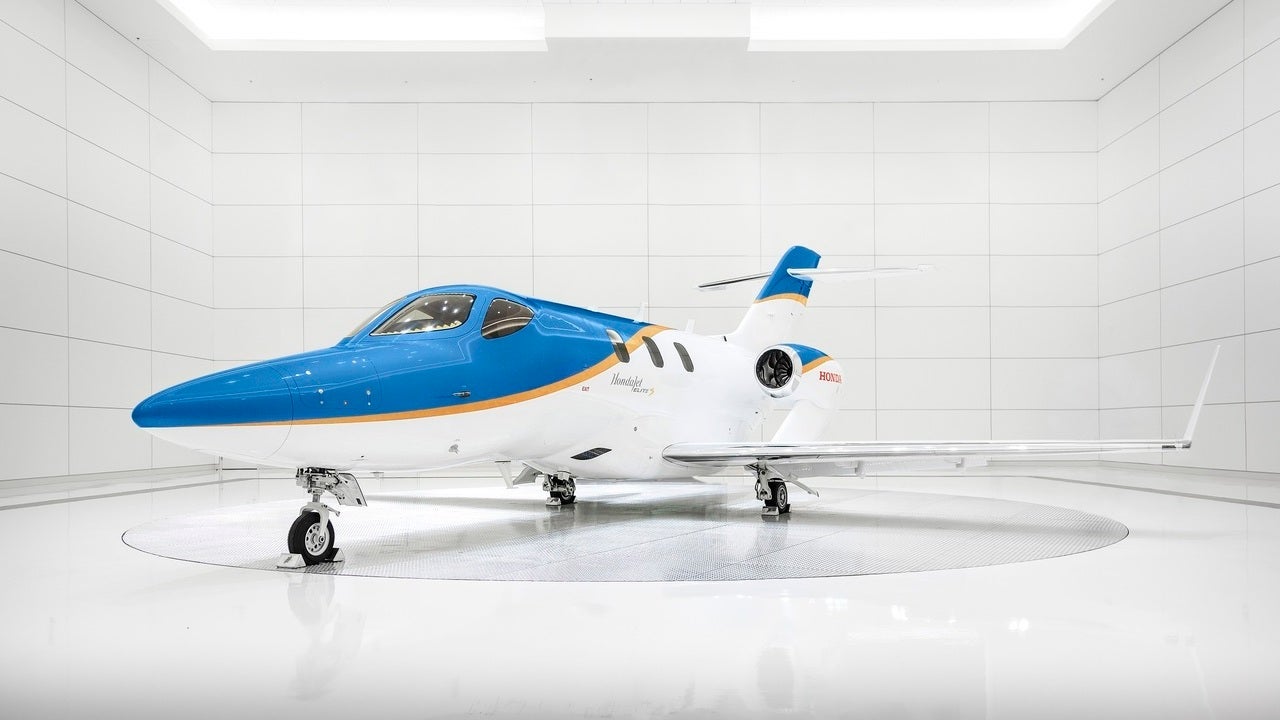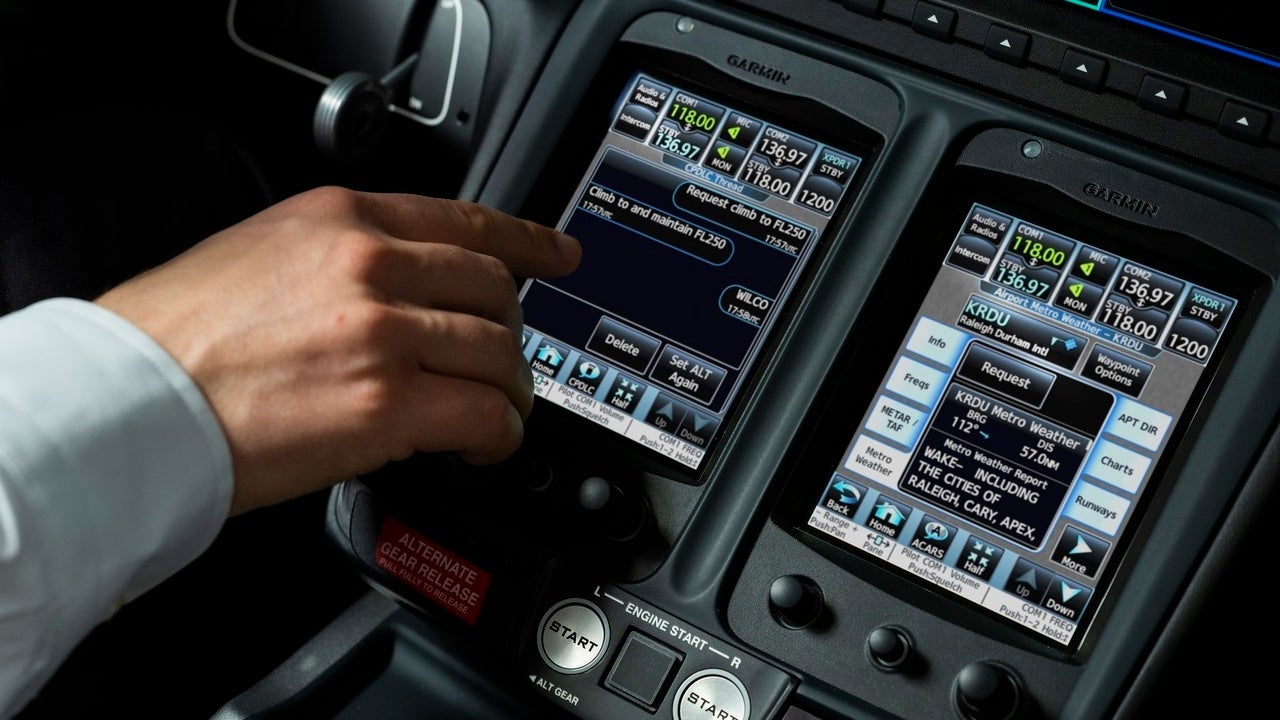HondaJet Elite S is a new light business jet introduced by US-based aircraft manufacturer Honda Aircraft in May 2021. The new aircraft is one of the most advanced light jets in the world. It is also the fastest, farthest and highest-flying aircraft in its class.
Equipped with improved aviation technology, the Elite S jet offers increased range compared to its predecessor. It is the latest addition to the HondaJet family of aircraft and an upgraded version of the HondaJet Elite, which was launched in 2018.
HondaJet Elite S design details
HondaJet Elite S has a length of 42.6ft (12.99m), height of 14.9ft (4.54m) and wingspan of 39.7ft (12.12m). The aircraft’s interior is 17.8ft (5.43m) long, 5ft (1.52m) wide and 4.83ft (1.47m) tall.
The maximum take-off weight of the jet has been increased by 200lb (91kg), which allows it to fly an additional 222km with extra payload or an additional passenger.
Made of composite materials, the fuselage is lighter and stronger, allowing the business jet to fly higher and use less fuel. The engines are placed over the wing to minimise aerodynamic shockwave and increase the aircraft’s top speed. The over-the-wing configuration also creates more externally accessible cargo space in the nose and aft as well as ensuring a noise-free cabin space to provide a quieter ride.
The natural laminar flow on the main wing and fuselage is designed to enable a smooth airflow over the aircraft’s surface, minimising air resistance and improving the performance in terms of range, fuel efficiency and speed.
The aircraft has 66ft³ of baggage space in the combined stowage, including 57ft³ in the aft compartment and 9ft³ in the nose compartment.
The cabin is designed to ensure passenger comfort and includes four fully adjustable leather seats placed in a classic club configuration. It also features two stowable executive tables, an optional, side-facing fifth seat and three electronically dimmable windows.
Passengers can use their personal mobile devices to control the cabin’s lighting, audio and temperature. The Elite S business jet also features new exterior styling with exclusive paint schemes, including luxe gold, gunmetal and deep-sea blue. The standard product offering features the signature Elite S logo, a bold red S, but customers can also opt for further customisation.
Cockpit and avionics of HondaJet Elite S
The Elite S features an ergonomically designed cockpit and customised avionics suite based on the Garmin G3000. The advanced avionics improve the efficiency of communication and reduce the workload of the pilot.
The latest US Federal Aviation Administration (FAA) Data Communications (Data Comm) standard and Aircraft Communications Addressing and Reporting System (ACARS) avionics features enable efficient communication by replacing traditional voice commands with text-based messaging.
It can be used for communication regarding departure clearance, en route services and air traffic services. Communications between controllers and pilots traditionally involved radio voice communications for passing on clearance and other flight information to pilots.
Voice communications can be prone to miscommunications leading to ‘talk back, read back’ errors. The FAA’s Data Comm standard aims to minimise such errors and allows air traffic control (ATC) and pilots to communicate flight plans, instructions, clearances, flight crew requests and other important communications with the touch of a button.
The COM3 feature of the aircraft’s software is intended to empower the operator to turn off the datalink mode of the radio and use it as a third very high frequency (VHF) channel for enhanced dispatch reliability.
Automated flight control system
Elite S also comes with an increased level of automation for enhanced operational safety. During manual flights, the flight control system activates and provides automatic control inputs to the pilot if the aircraft moves away from a safe flight envelope. When the pilot returns the flight to normal parameters, the system is automatically disabled.
An under-speed protection system is available to avoid a stall condition by automatically adjusting aircraft pitch until the jet achieves a safe airspeed. The Go-Around mode of the Elite S can be activated if the pilot misses an approach at the airfield.
The flight control system also supports the pilot during take-off and landing by calculating the required runway length as well as optimal climb and approach gradients.
Engine and performance of Honda Aircraft’s new business jet
The Elite S is powered by two GE Honda Aero Engines HF120 turbofan engines, each delivering a maximum thrust of 2,050lbf (2,779.4Nm). The weight of each HF120 engine is 211kg, while the length is 1.51m.
The engine has a thrust-to-weight ratio of 4.5:1, an overall pressure ratio of 24:1 and a bypass ratio of 2.9:1. The specific fuel consumption is less than 0.7lb/lbf/h (71kg/kN/h).
The upgraded aircraft has a maximum cruise speed of 422ktas (782km/h) and a range of 1,437nm (2,661km) while flying at an altitude of 13,106m (43,000ft).

